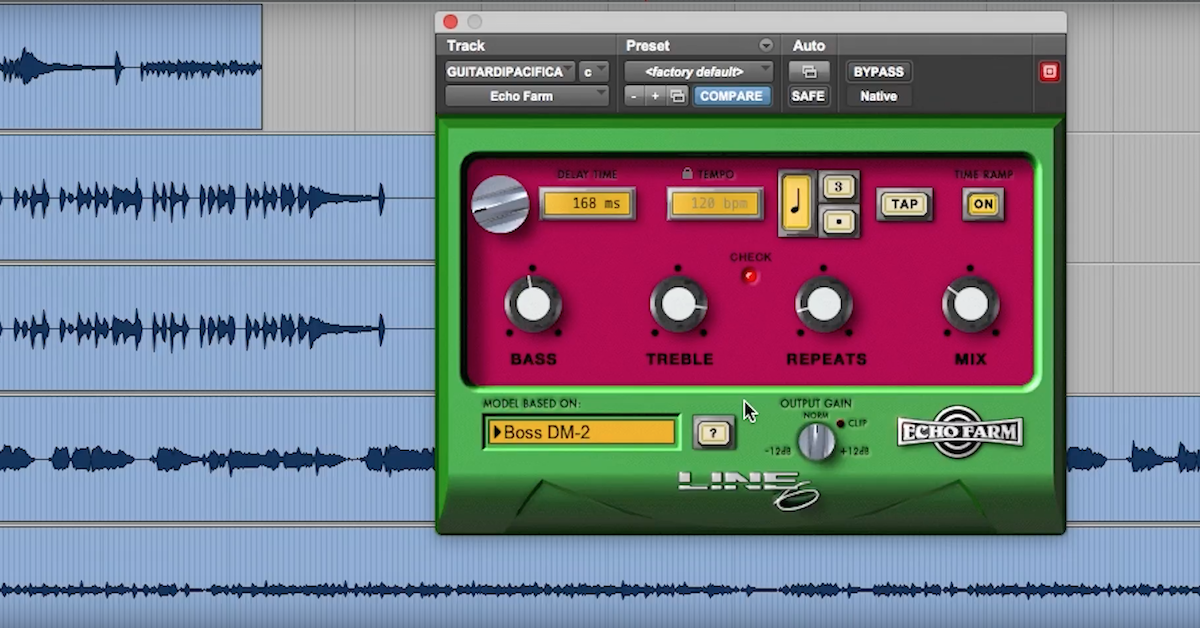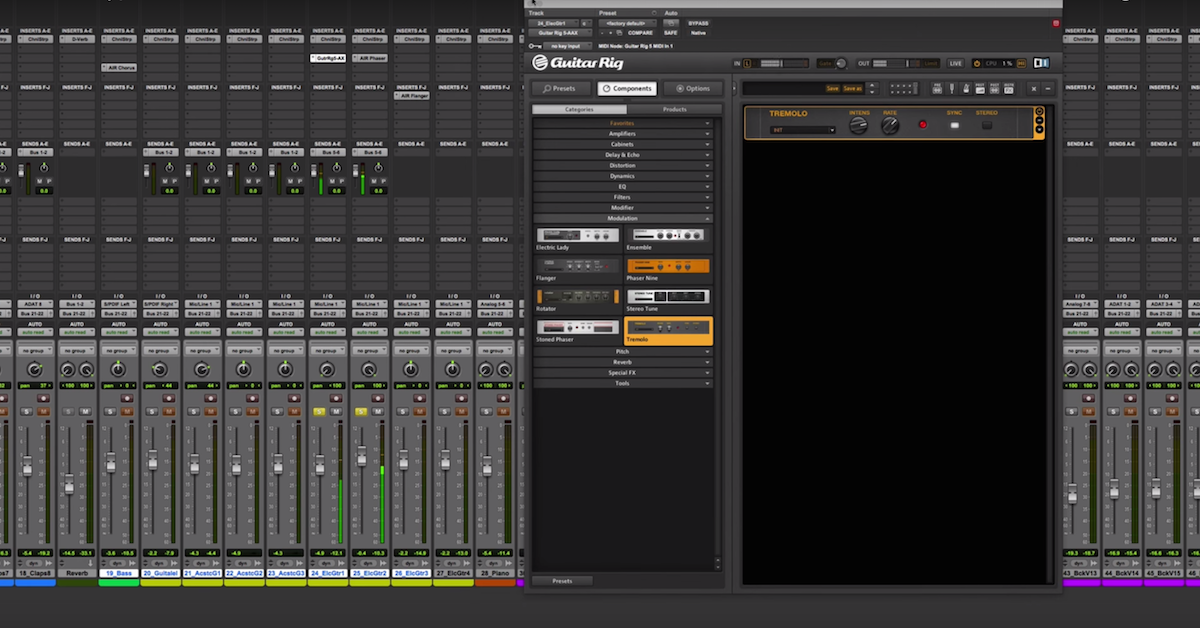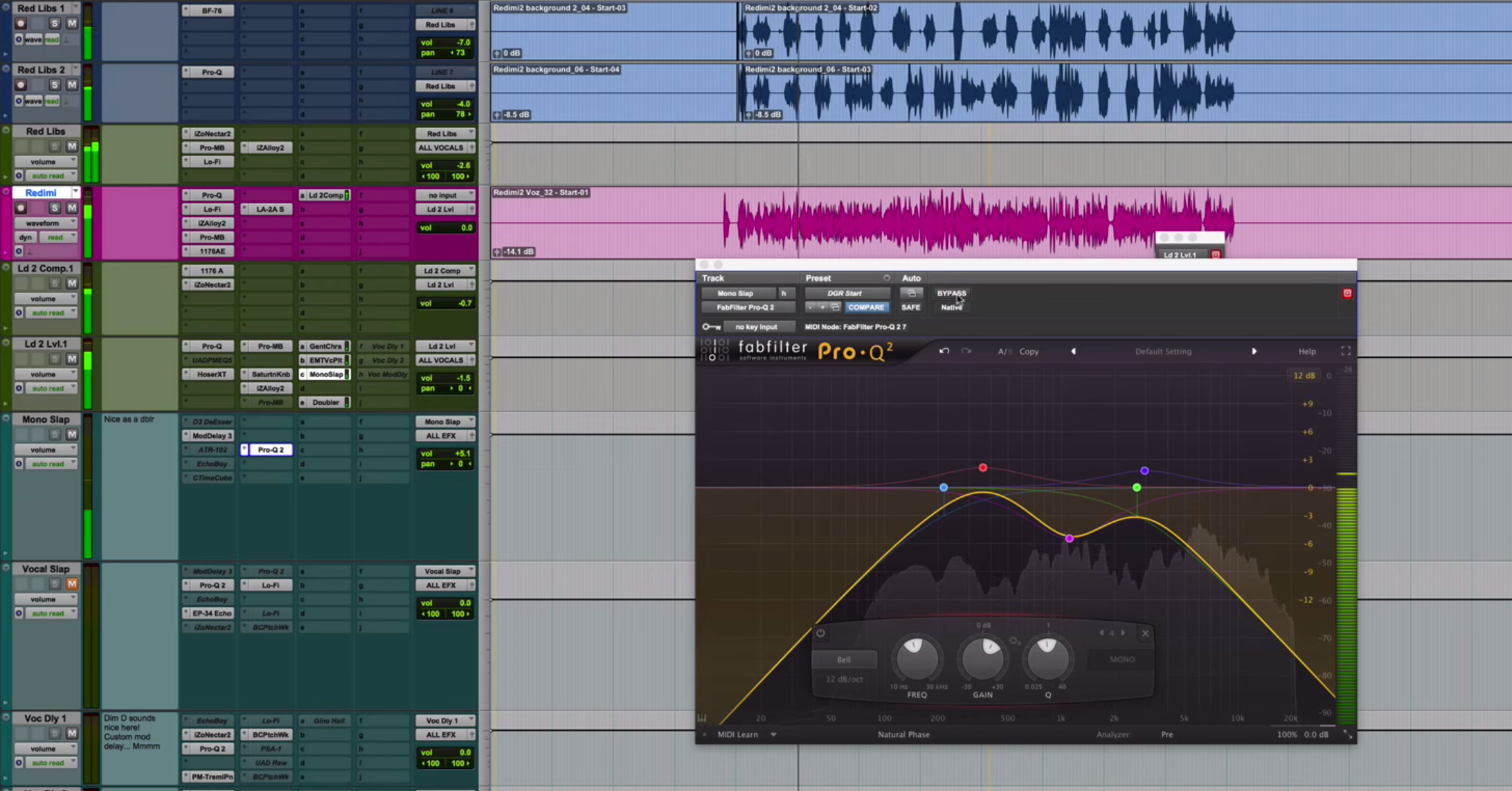4 Basic Delay Effects You Can Use in a Mix
I’m going to be working inside a session of an acoustic pop song. I’ve already got my rough mix pulled up, so I’ll play it back for you, and then I’ll get to work on my lead vocals, adding in the delay effects.
[mix playback]
So I’m going to be adding in the delay effects on this lead vocal channel right here. I’ll solo it and let you listen to it.
[vocal plays]
The conventional way to use delay effects is as a parallel or send effect, where you have the dry unprocessed version on one channel, and then a processed wet version on a separate channel that you can blend in.
So here what I’m going to do is create a new track, specifically a mono auxiliary input.
Next, I need to route the signal from my lead vocals over to this track. Click on send, and I’ll find buss 1. What you need to do is make sure that the send name matches the input that you have for the auxiliary track. Select buss 1 again…
Now watch this as I increase the level on this fader, the signal will start to show up on this channel.
[vocals play]
Next, I need to insert the plug-in that’s going to add the delay. So here, I’m going to go into my plug-ins menu, find delay, specifically, the Mod-Delay III. This is the stock delay plug-in that comes with Pro Tools.
For good measure, I’m going to come down here, double click, and rename this track to be “delay.”
The first type of delay effect that I want to show you is one that’s called a tempo synchronized echo effect. It’s very common in acoustic and pop styles of music. This delay time is going to be synchronized to the tempo of my song.
Over here in my edit window, I’ve setup the tempo of my song to be 97 beats per minute. When I open up this plug-in, it automatically detected and synchronized to that tempo.
When I want to set the delay time to match that tempo, I just need to click on these buttons down here. So if it’s an eighth note, quarter note, and so on, it will automatically adjust to the right delay time.
[vocals play with delay]
If you wanted to add a dot to the note, for instance, a dotted eighth note, which is a common delay time, you just need to select the note here and then add the dot to it.
[vocals play with delay]
If you want to achieve multiple repetitions, you just need to turn up this feedback knob.
[vocal playback, with delay]
So that’s the tempo synchronized echo effect.
Next, let me show you a different kind of delay effect, and that’s the slap echo.
Here, we’re intentionally not going to use a tempo synchronized delay time. We’re in fact, going to manually set the delay time to be somewhere between 120 and 150 milliseconds.
This style of echo effect will give you a different impression of the sound. In fact, it’s intention is to replicate a kind of delay effect that you would have achieved in the old days by using tape. So here, we’re not actually concerned with if it’s going to synchronize with the tempo of our song or not.
So let me play this back, and you can listen to what a slap echo sounds like.
[slap echo plays]
If you want to further simulate what it will be like using a tape machine, you can just use this low-pass filter.
[slap echo plays, filtered]
So that’s how you can setup a slap echo.
Next, let me show you how you could use delay to create a doubling kind of effect. This would be somewhere around the range that you’d find for a chorus kind of effect.
So instead of being 135 milliseconds, let’s set it in the range of about 30-35 milliseconds.
Now, we no longer — as listeners are going to hear these as two separate sounds, they’re going to hear that there’s a doubling or thickening happening.
[doubling delay plays]
So that’s a much shorter delay time.
Let me take this one step further and show you a fourth kind of delay. This is going to be slightly different. Instead of using this as a parallel effect, what I’m going to do is setup a series stereo effect, and show you how you can use a very short delay time to actually pan this signal from left to right.
So here, we’re going to get rid of this delay track that’s mono, delete this one, and create another one here that’s going to be a stereo auxiliary input.
Now, instead of bussing my signal and splitting it off on this track, what I’m going to do is get rid of this send and change the routing of the output. This is going to be used to create a stereo series delay effect. So here, route the signal out to — how about buss 3-4. Then on this track, make the input buss 3-4.
Just for good measure, I’ll play it back, we can see the signal going through it’s channel.
[vocals play, sending to buss 3-4]
Next we’re going to insert in here a stereo delay plug-in. You can still use Mod Delay III. That will be fine.
Next, we’re going to start out by making the delay time all the way down here to zero milliseconds. My intention is to use the delay so that it’s going to shift your impression from left to right. So very short delay times can actually be used for panning, besides just echoes.
So here, I’ll start out and I’m going to delay it on the right side. I envision it’s going to shift the perception of it over to the left side.
[vocals play with delay, left]
I can do the same thing for the right side.
[vocals play with delay, right]
So there were four different delay effects that you can use. First off was the tempo synchronized delay or echo, then I showed you the slap echo. Then I showed you a chorusing and doubling kind of sound, and then also how you can use delay to actually create the impression of panning.
It’s all about just changing the delay times to accomplish those four basic types of delay effects.





